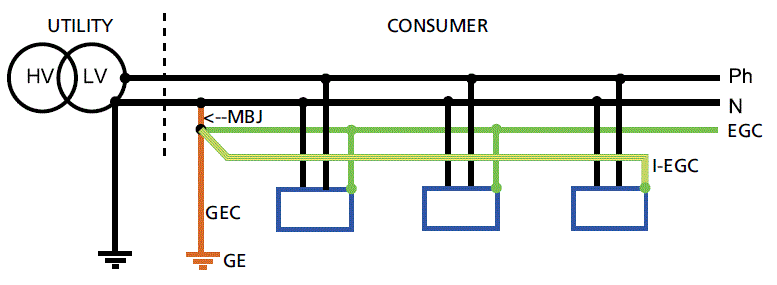vanderkoppel
Member
- Location
- Best, The Netherlands
We have an equipment which starts with a power distribution unit which requires 3 phase and an isolated ground.
The isolated ground goes to a ground bar in the power distribution unit to which the different units of the equipment are hooked up.
Next to this runs a so called NEC safety ground and metal conduit ground which is connected to the casing of the power distribution unit.
Now according my US colleagues according NEC the ground bar inside the power distribution unit should be connected to building steel.
I would expect the NEC safety ground need to be connected to building steel.
If I understood Mike's video's correct (NEC systems and equipment grounding) the NEC safety ground is equipment grounding and also building steel is part of equipment grounding.
The isolated earth is the equipment grounding conductor and should not be used for equipment grounding.
The isolated ground goes to a ground bar in the power distribution unit to which the different units of the equipment are hooked up.
Next to this runs a so called NEC safety ground and metal conduit ground which is connected to the casing of the power distribution unit.
Now according my US colleagues according NEC the ground bar inside the power distribution unit should be connected to building steel.
I would expect the NEC safety ground need to be connected to building steel.
If I understood Mike's video's correct (NEC systems and equipment grounding) the NEC safety ground is equipment grounding and also building steel is part of equipment grounding.
The isolated earth is the equipment grounding conductor and should not be used for equipment grounding.



